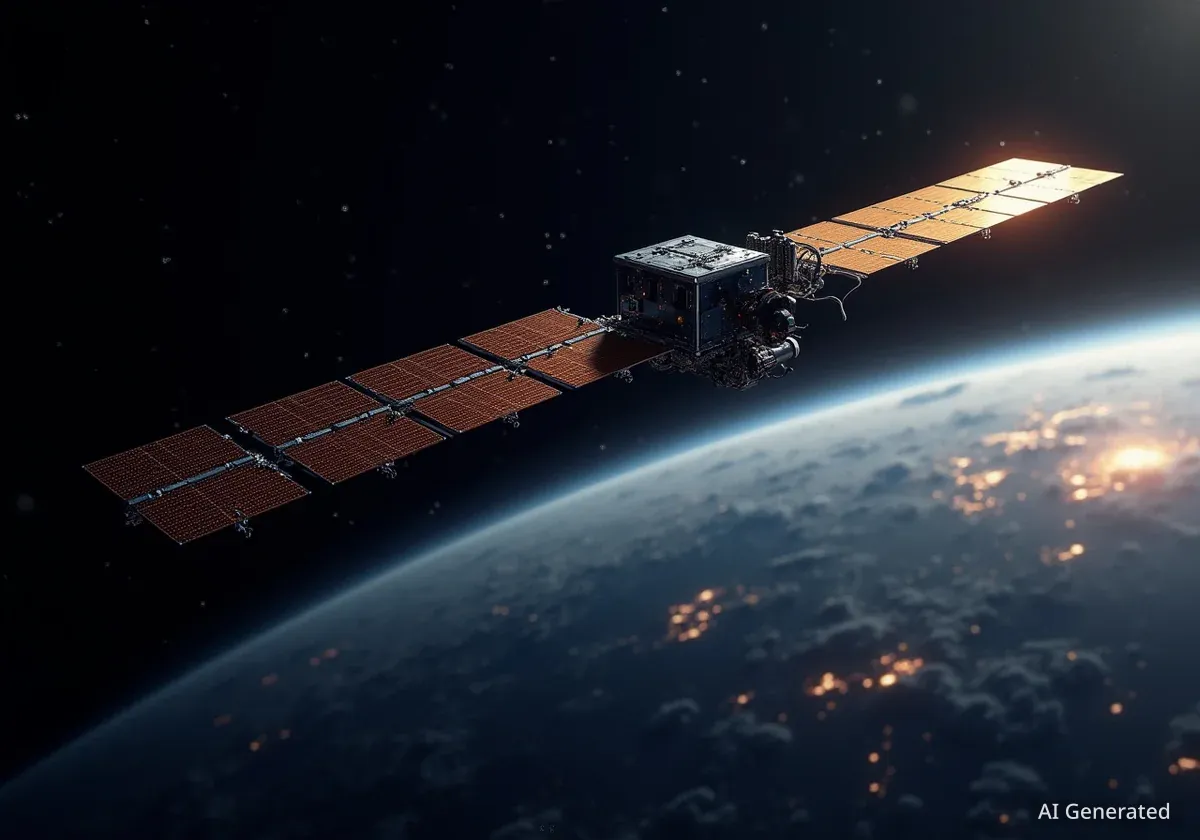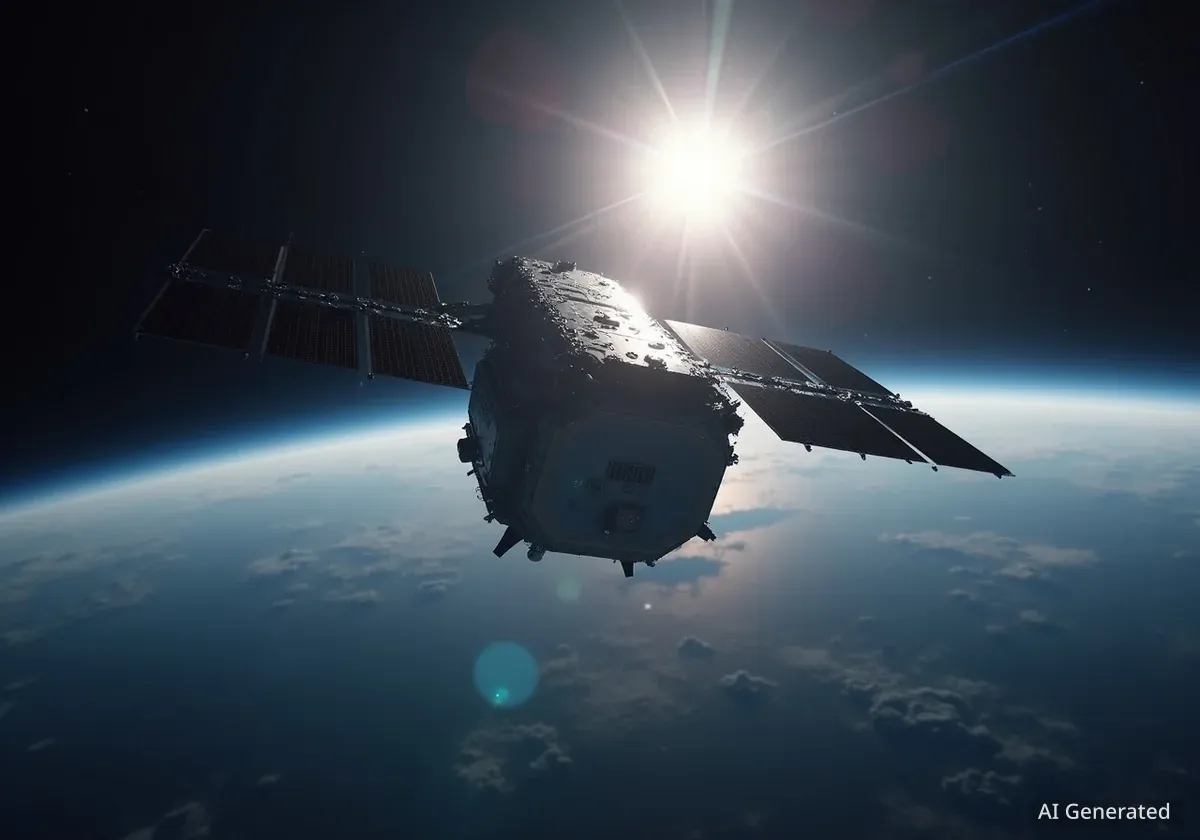Military experts are calling for the creation of a new specialized role, the Space Joint Terminal Attack Controller (SJTAC), to coordinate space-based attacks for ground forces. This proposal comes as the U.S. Space Force and other global powers increasingly view space as a distinct warfighting domain, raising the need for dedicated personnel to bridge the gap between orbital assets and tactical units on the battlefield.
The concept mirrors the long-established role of the Joint Terminal Attack Controller (JTAC), who embeds with ground troops to direct close air support from aircraft. Proponents argue that as space weaponry moves from science fiction to potential reality, a similar specialist will be essential for precision, safety, and effectiveness in future conflicts.
Key Takeaways
- A new military specialist, the Space Joint Terminal Attack Controller (SJTAC), has been proposed to coordinate space-based assets for ground troops.
- The role is modeled after the existing Joint Terminal Attack Controller (JTAC) for air strikes, highlighting the need for precision and deconfliction.
- SJTACs would be embedded with tactical units, particularly Special Operations Forces (SOF), to provide real-time targeting and situational awareness from space.
- The creation of this role is driven by the formal recognition of space as a warfighting domain and the development of potential orbital weapons.
- Advocates suggest SJTACs should be part of the U.S. Space Force to centralize expertise and ensure interoperability with NATO allies.
The Need for a Specialist on the Ground
For decades, military operations have relied on specialists to safely and effectively coordinate firepower. When an infantry unit needs air support, a qualified JTAC is responsible for guiding the pilot to the correct target, ensuring friendly forces are not hit in the process. This requires deep expertise in aircraft capabilities, munitions, and communication protocols.
Now, a similar logic is being applied to the domain of space. Retired U.S. Army Colonel Kevin Stringer and Norwegian Army officer Marius Kristiansen recently outlined the case for the SJTAC. They argue that as space becomes more integrated into military operations, a generalist cannot be expected to manage the complexities of orbital assets.
“For normal airstrikes, an infantry scout or aviation aeroscout can call them in during an emergency,” Stringer explained. “But the margin of error grows with a generalist doing infrequent specialist activities. A JTAC is a professional who focuses on this task. The SJTAC would be similar.”
This specialized focus is seen as critical. An SJTAC would be responsible for tasks far beyond simple communication, including assessing target vulnerabilities using space-based sensors, providing real-time intelligence, and potentially guiding future orbital weapons with precision.
Integrating Space with Special Operations
The proposed SJTAC role has a particularly strong connection to Special Operations Forces (SOF). These elite units often operate in small teams deep in hostile territory, where access to advanced intelligence and firepower is a matter of survival. The strategic triad of Cyber, Space, and SOF is already recognized as a powerful combination in modern warfare.
According to the proposal, an SJTAC would embed directly with these tactical SOF units. Their presence would provide a direct link to a range of space capabilities:
- Targeting: Identifying and tracking high-value targets like enemy military bases, critical infrastructure, or mobile assets.
- Situational Awareness: Using satellite reconnaissance to provide teams with real-time updates on enemy movements and battlefield conditions.
- Preemptive Action: Monitoring potential threats to enable preemptive strikes or sabotage missions.
This integration would allow ground commanders to leverage space assets dynamically. For example, an SJTAC could task a satellite to monitor a specific location, analyze the data, and use it to coordinate a subsequent action, whether that involves a kinetic strike or an intelligence-gathering mission.
Future of Orbital Weaponry
The push for SJTACs anticipates the development of advanced space-based weapons. While still largely conceptual, these could include high-energy lasers, electromagnetic pulse (EMP) weapons, or kinetic bombardment systems, often referred to as “Rods from God.” A trained controller would be essential to deploy such powerful systems responsibly.
A Dedicated Role within the Space Force
A key question surrounding the proposal is whether a new, separate role is necessary. Some suggest that existing JTACs could simply receive additional training on space systems, or that the responsibility could be given to Air Force Combat Controllers. However, proponents of the SJTAC concept disagree, pointing to organizational logic and the need for deep expertise.
With the establishment of the U.S. Space Force, space is officially recognized as a separate warfighting domain, distinct from the air. Stringer and Kristiansen argue that this separation necessitates a dedicated specialist who belongs to the service responsible for that domain.
Organizational Efficiency and Expertise
Creating the SJTAC role within the Space Force would centralize the development of doctrine, training, and technology for space-to-ground operations. This approach avoids the inefficiency of having each military branch—Army, Navy, Air Force, and Marines—develop its own separate space control capabilities for their special operations units. A unified Space Force component would ensure a consistent standard of excellence.
This structure is also seen as crucial for maintaining deep institutional knowledge. Just as a pilot focuses on flying and a submariner on undersea warfare, an SJTAC would be entirely dedicated to mastering the complexities of the space domain. This level of specialization is considered vital for maximizing the effectiveness of multi-billion dollar satellite constellations and future space systems.
Enhancing Allied Interoperability
The concept of the SJTAC extends beyond the U.S. military. In a coalition environment like NATO, interoperability is paramount. Not all allied nations possess their own space assets, and many rely on the capabilities provided by the United States.
An SJTAC could serve as a critical link between U.S. space systems and combined SOF units from various NATO countries. This specialist would be able to translate the needs of an allied ground commander into a request that U.S. space assets can fulfill, ensuring seamless integration during joint operations.
This function is essential because allied SOF formations are expected to operate in a combined fashion. A standardized controller who understands the capabilities and limitations of U.S. space systems would be an invaluable force multiplier, allowing the entire coalition to benefit from advanced orbital support.
Without such a specialist, proponents warn that the special operations community risks being left behind. “Without this function, SOF will not be able to access the developing space capabilities nor be involved in their development and experimentation,” Stringer noted. The creation of the SJTAC is therefore presented not just as an improvement, but as a necessary step to ensure ground forces can fully leverage the ultimate high ground in future conflicts.





